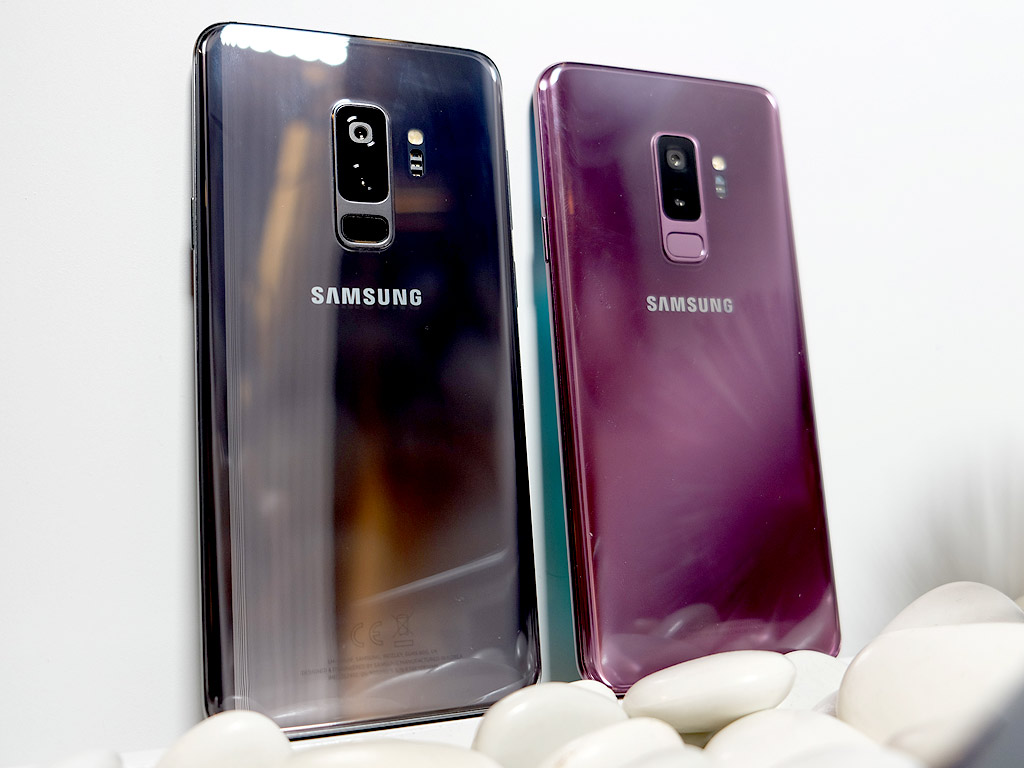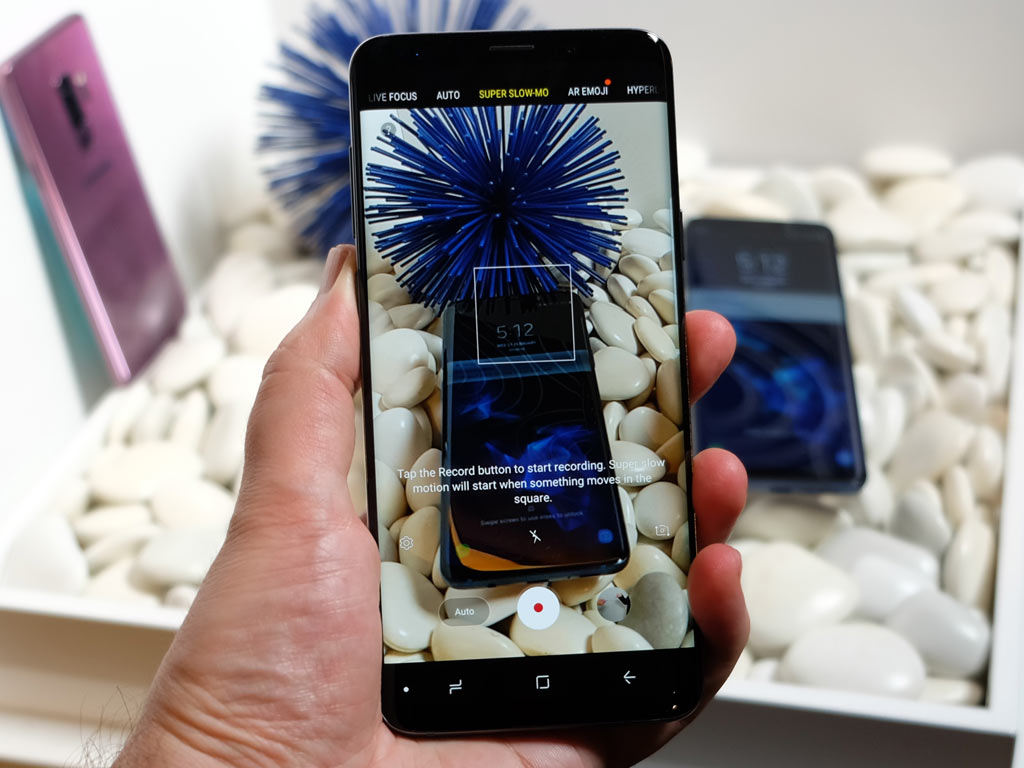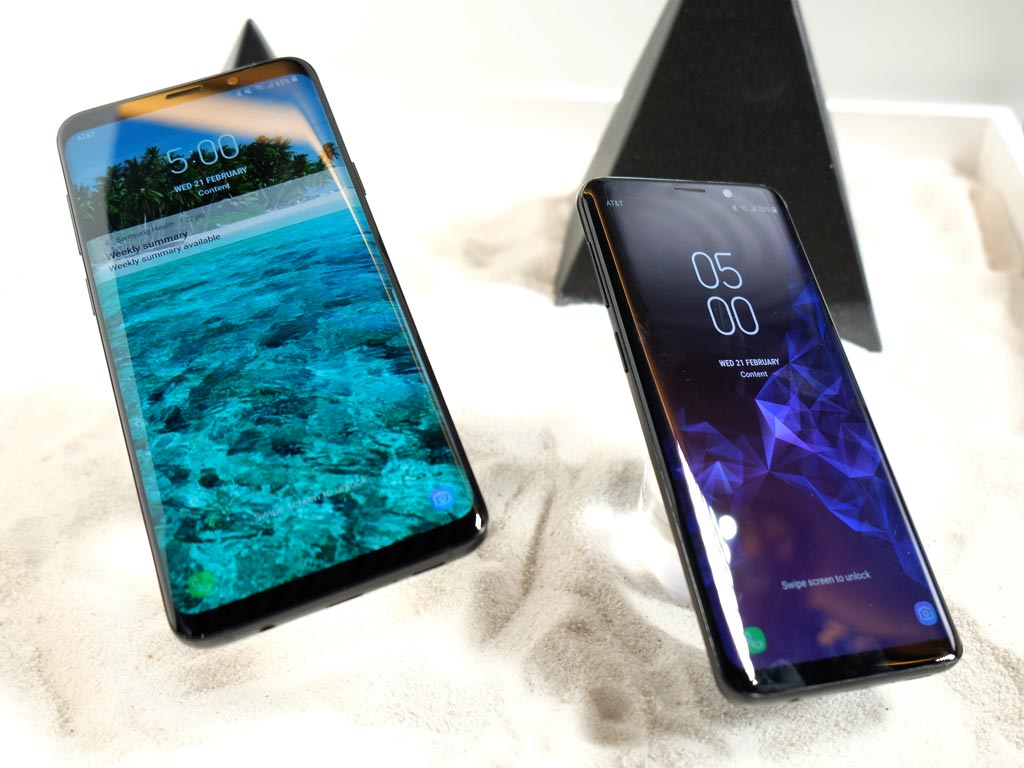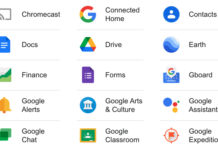
Samsung Galaxy S9Display: 5.8-inch 2960 x 1440 AMOLED display 18.5:9 aspect ratio with 570 pixels per inch |
Samsung has officially launched the Galaxy S9 and S9+ smartphones, iterating on last year’s designs and adding new features to the camera.
Unlike last year, these two devices aren’t dramatically different from the previous year, where Samsung removed the physical home button. Changes were made to the camera, both physically and in the software, and stereo speakers were added, but much of what’s different lies in how the phone functions.
I got the chance to play with them a little at a briefing in New York prior to the official announcement in Barcelona.
Iterative design
The Galaxy S9 has a 5.8-inch curved AMOLED display, while the S9+ has a 6.2-inch curved AMOLED. The resolution and aspect ratio are the same for both. Only the pixel density is different, with the larger of the two at 529 pixels per inch.
They also both have the same processor—the Snapdragon 845. Same internal storage (64GB), same sensors, same primary rear and front-facing cameras and same sensors. Connectivity is the same, and even the basic design and colours are the same.
The microSD card slot is back for both devices to expand on the internal storage. The headphone jack is also still intact, appeasing those who still want to plug in headphones the old fashioned way. Samsung wisely moved the fingerprint sensor away from the side of the lens and over to below it, like many other phone manufacturers have.
So, what’s different? The S9+ comes with 6GB of RAM, compared to the S9’s 4GB. Stereo speakers are on both devices, where a bottom speaker is matched with another in the earpiece, marking the first time Samsung has done this on any of its phones. The S9+ has a larger 3500mAh battery, which is understandable given its size.
Both otherwise look the same, with the glossy finish that has been standard going back to the Galaxy S6. They weigh about the same as their predecessors, and feel pretty similar too.

Camera upgrades
The rear camera gets a variable mechanical aperture with f/1.5 and f/2.4 f-stops. This is a first for a smartphone, and should help when shooting in bright or dark settings. Note that the second 2x optical zoom telephoto lens is only on the S9+, not the S9. This is the same lens introduced in the Galaxy Note 8, which enabled the Live Focus feature that allowed you to control how much depth of field you wanted in the image after it was taken.
Samsung’s “Super Speed Dual Pixel Sensor” is designed to be more efficient in a variety of ways, but for practical purposes, it should help with new modes. Key among these is the Super Slow-Mo mode that records a 0.2-second clip at 960fps for a six-second clip that is four times slower than the previous slow-motion mode.
There are also two ways to shoot them. You can go manual to capture it yourself, or have it do it automatically when the subject enters the focus box. I’ll need to test it further to really get a good sense of it, but the feature is likely to be popular with some users. Samsung included quick options to share them on social media.
It did the same with what it calls AR Emojis, which is Samsung’s answer to Apple’s animojis seen in the iPhone X. With stickers and facial features built-in, the idea is to personalize the animated emojis by using the front-facing camera. It seems pretty neat because of the range of options, but I suspect only users who are into this sort of thing will find value in it.
Otherwise, the image sensor is the same for both phones, which is a 12-megapixel sensor with optical image stabilization. While there is some improvement over how the camera shoots, there isn’t that much of a difference internally. The f/1.5 aperture will certainly help in low-light or night shots, though I would always recommend users learn the Pro mode.
Speaking of that, an interface tweak now makes it easier to switch between the different shooting modes. Swipe left or right on the screen to toggle through them, or select one right from the top menu bar.
Bixby
Samsung said next to nothing about Bixby as a voice assistant, focusing more on its abilities as a reference tool via the camera. Shoot a dish and it can try approximating the calories in the food on it.
Makeup also looks to be a big one. You can use the Bixby Vision to try out different products, testing out how colours and styles will look on your face. I imagine women will like having that kind of flexibility, but until I show it to those I know, I’ll have to reserve any judgment on the new feature.

SmartThings
This detail was actually announced at CES in January, but what it comes down to is that Samsung will amalgamate its various smart home and Internet of Things platforms into one app, which will be SmartThings. The Galaxy S9 and S9+ will be the first Samsung handsets to have it.
Using SmartThings with third-party products will still require an actual SmartThings hub plugged into a router, so the app-based functionality here applies directly to compatible Samsung devices. When I review both phones, I’ll get a better sense of how all that will work.
Coming soon
Now that the Samsung Galaxy S9 and S9+ are out in the open, pre-orders are available starting today until launch on March 16. It will come in titanium grey and lilac purple, but not midnight black, even though that colour will come out in other parts of the world.




samsung galaxy s9 just slightly differs with the samsung galaxy s9 plus rest both the phones are almost identical.
Comments are closed.